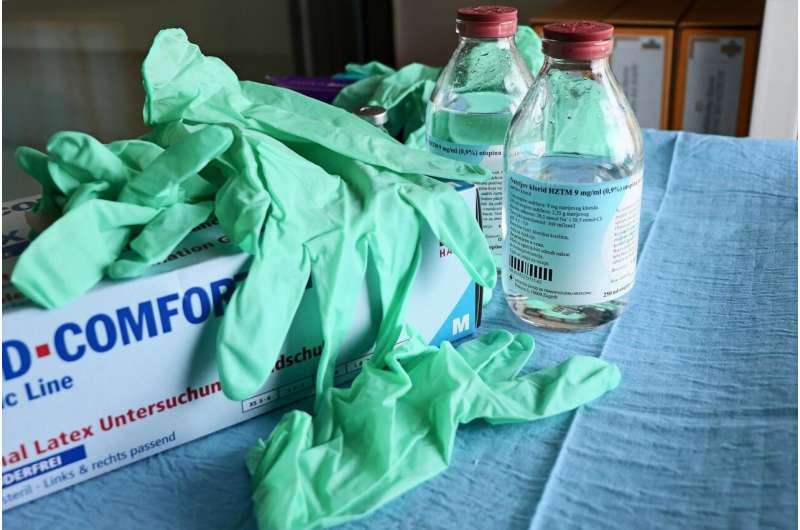This article has been reviewed according to Science X's editorial process and policies. Editors have highlighted the following attributes while ensuring the content's credibility:
fact-checked
peer-reviewed publication
trusted source
proofread
Midwives' sustainability program substantially reduces amount of hospital waste

A side-effect of the lifesaving work of hospitals is the amount of waste it generates, from single-use gowns to the plastic tips on thermometers and used syringes. Waste segregation impacts the way in which this waste is handled, the cost of disposal and the impact on the environment.
According to Victorian Department of Health estimates, the State's public health system produced 42,000 tons of solid waste in 2010–2011. Greater use of single-use products during the COVID-19 pandemic means those figures are now much higher.
However, the results of a recent program to reduce waste at one of the largest maternity hospitals in Australia have shown that targeted education for staff and making sustainability initiatives more visible can cut down on the amount of hospital waste going to landfill. This is good for the health service and the environment.
The Green Maternity Intervention, led by midwives at Western Health's Joan Kirner Women's and Children's Hospital, resulted in a 71% decrease in "clinical waste" and a 48% reduction in waste management costs.
Waste management impacts the environment and the budget
"Waste disposal is a significant cost to health care organizations and incorrect waste segregation, like putting unrecyclable items in recycling bins, can increase that cost," says Professor Linda Sweet, from Deakin's Institute for Health Transformation and Chair in Midwifery at Western Health, who led the project with support from the Institute's Dr. Vidanka Vasilevski and a team of passionate midwives at Western Health.
"We wanted to understand if a midwife-led intervention on improving waste management in a maternity hospital could help increase staff knowledge and reduce waste and waste management-related costs."
The intervention involved midwife sustainability champions, education sessions, posters detailing correct waste preparation and disposal, monthly newsletters outlining key waste management strategies, and incentives to promote engagement with the intervention.
"Staff had identified inaccurate waste segregation as a problem that leads to greater waste management costs and a negative environmental impact," Dr. Vasilevski says.
"Although midwives value sustainable health care practices, factors such as high patient turnover, lack of time, inconvenient bin locations, and a perception that all waste is 'clinical' can make it difficult to 'walk the talk'".
Targeted education is key
The staff were surveyed on their waste management knowledge and attitudes before and after the intervention. A waste audit was conducted at the beginning, middle, and end of the project to track whether the intervention actually resulted in improved segregation.
The waste audit data showed reductions in "clinical waste" and that waste segregation improved from the beginning to the end of the intervention, resulting in a reduction in waste management costs.
"When tailored education is provided, effective waste segregation increases. Our findings suggest that targeted education about what items go into what bin is useful, and that the maternity staff found the instructional signage helpful," Prof. Sweet says.
"Having dedicated sustainability champions among the clinical staff—with allocated time to take on this role—was critical in encouraging behavioral change.
"Projects such as this are important in improving the sustainability of our health services," she adds.
"With appropriate support, midwives can drive behavioral changes that can reduce the carbon footprint of maternity ward."
Where to next?
The feedback from the midwives involved in the intervention has been very positive.
"Not everything we do in health care requires single use items and it's better to reuse where you can," says Western Health midwife and nurse Jessica Huynh.
"One of our midwives commented that she hadn't realized we could have a more sustainable birthing room because everything is mostly single use besides the birthing equipment, so seeing reusable tubing for nitrous oxide was educational for her."
The research team will now discuss the value of the initiative and the potential for rolling it out on other wards at the hospital with Western Health executives. The findings of the study will also be published in the Journal of Advanced Nursing.





















